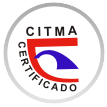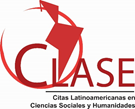Strengthening food security through the "safe meat" model
Keywords:
Food safety, Disease control, Food control, Local governmentsAbstract
The safety of meat products obtained from municipal slaughterhouses is questionable due to deficiencies in traceability, administrative management and infrastructure. The purpose of the study was to design an integral management model that will contribute to guarantee food safety in these establishments. The research proceeded under a quantitative approach, with a non-experimental design and a projective scope. The technique applied was the survey, allowing data to be collected by means of a questionnaire validated by expert judgment, which consisted of 24 items organized in key dimensions. The results indicated that more than 50% of the slaughterhouses operate at low levels of safety, and 91% lack functional traceability systems. These shortcomings, in addition to affecting public health, show a lack of responsibility on the part of local governments in the regulation and supervision of these establishments. The proposed model emphasizes the need to coordinate efforts between the public and private sectors, promoting the modernization of infrastructure, technical training and continuous monitoring. It also seeks to comply with international standards such as HACCP and Good Manufacturing Practices (GMP), and therefore this study provides a practical solution for strengthening food safety, guaranteeing the quality of meat products and protecting consumers.
Downloads
Published
How to Cite
Issue
Section
License
Copyright (c) 2025 Editorial "Universo Sur"

This work is licensed under a Creative Commons Attribution-NonCommercial-NoDerivatives 4.0 International License.
La editorial "Universo Sur", de la Universidad de Cienfuegos, publica el contenido de la Revista "Universidad y Sociedad" bajo una Licencia Creative Commons Atribución-NoComercial-SinDerivar 4.0 Internacional.
© Podrá reproducirse, de forma parcial o total, el contenido de esta publicación, siempre que se haga de forma literal y se mencione la fuente.










